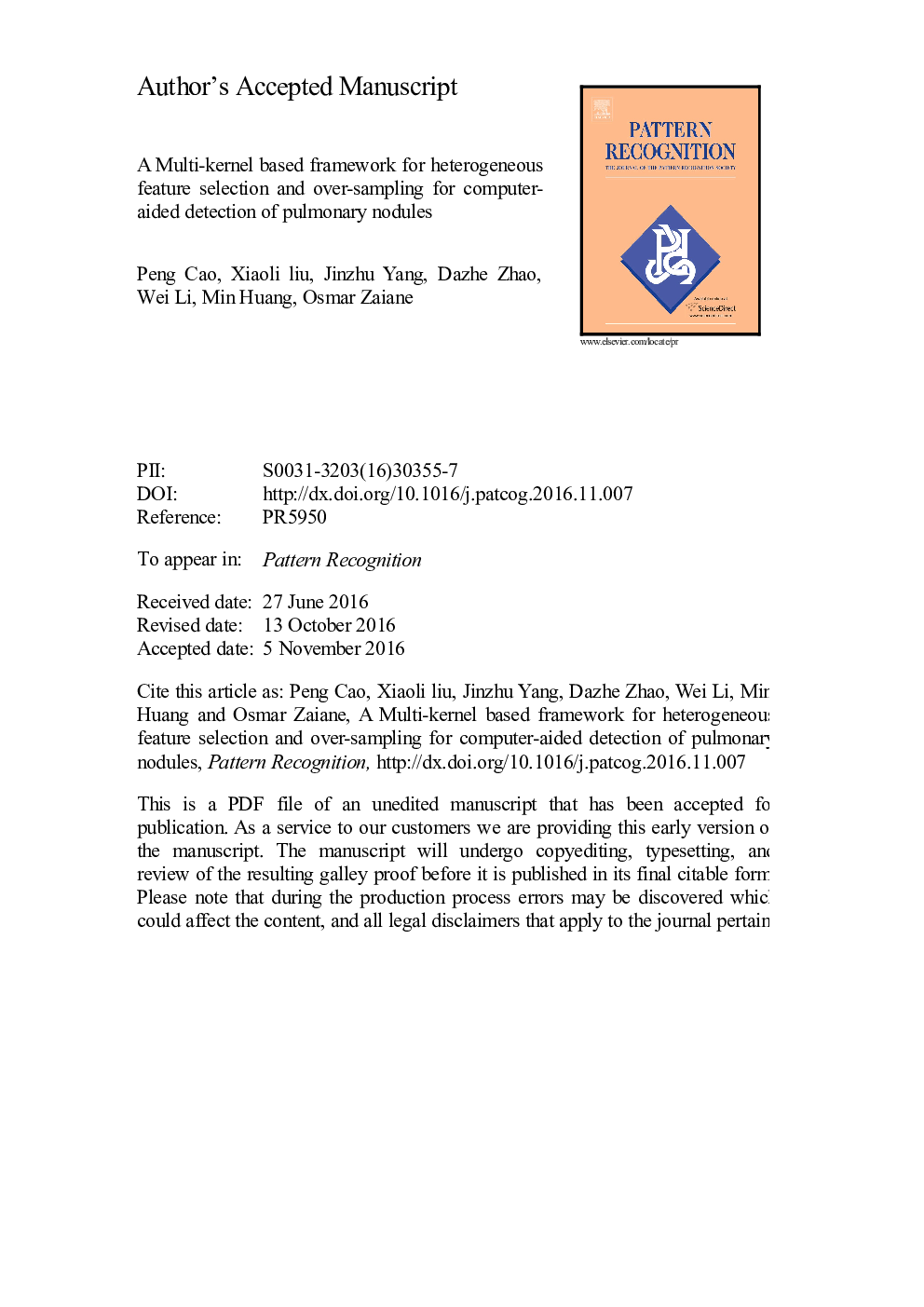| Article ID | Journal | Published Year | Pages | File Type |
|---|---|---|---|---|
| 4969899 | Pattern Recognition | 2017 | 49 Pages |
Abstract
Classification plays a critical role in False Positive Reduction (FPR) in lung nodule Computer Aided Detection (CAD). To achieve effective recognition of nodule, many machine learning methods have been proposed. However, multiple heterogeneous feature subsets, high dimensional irrelevant features, as well as imbalanced distribution between the nodule and non-nodule classes typically makes this problem challenging. To solve these challenges, we proposed a multi-kernel based framework for feature selection and imbalanced data learning in Lung nodule CAD, involving multiple kernel learning with a â2,1 norm regularizer for heterogeneous feature fusion and selection from the feature subset level, a multi-kernel feature selection based on pairwise similarities from the feature level, and a multi-kernel over-sampling for the imbalanced data learning. Experimental results demonstrate the effectiveness of the proposed method in terms of Geometric mean (G-mean) and Area under the ROC curve (AUC), and consistently outperform the competing methods.
Keywords
Related Topics
Physical Sciences and Engineering
Computer Science
Computer Vision and Pattern Recognition
Authors
Peng Cao, Xiaoli Liu, Jinzhu Yang, Dazhe Zhao, Wei Li, Min Huang, Osmar Zaiane,
